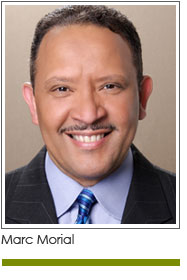 “Americans who never imagined themselves becoming poor are now asking for assistance and many are not getting the help they need.” Scott Allard, a University of Chicago professor and co-author of a new Brookings report
“Americans who never imagined themselves becoming poor are now asking for assistance and many are not getting the help they need.” Scott Allard, a University of Chicago professor and co-author of a new Brookings report
The Great Recession is rewriting the book on poverty and upward mobility in America. It used to be that a move from the inner city to the suburbs meant an escape from the clutches of welfare, homelessness and hunger. But recent Census Bureau statistics and a new Brookings analysis reveal that the economic downturn of the past three years has resulted in a dramatic rise in suburban poverty. While increasing numbers of middle class whites, minorities and immigrants have migrated from the city to the suburbs in recent years, an old nemesis has followed. According to Brookings, since 2000, the number of poor people in the suburbs rose by 37.4 percent to 13.7 million. And between 2007 and 2008, the poverty rate increased in 57 of the 100 largest metro areas. The suburban poverty growth rate is more than double that of cities and significantly exceeds the national rate of 26.5 percent.
Brookings reports: “Although poverty rates remain higher in central cities than in suburbs (18.2 percent versus 9.5 percent), poverty rates have increased at a quicker pace in suburban areas.”
The new face of poverty includes many who fled poor, inner city neighborhoods for the promise of affordable housing and better jobs in the suburbs. But America’s suburbs have been especially decimated by the foreclosure crisis and great recession job losses. Many new suburbanites find themselves on all-too-familiar ground – out of work and worried they won’t be able to put food on the table or a roof over their family’s heads. Some are showing up at homeless shelters. And all of them are not unemployed. According to Brookings, 45 percent of suburban social service providers report an increase in the number of clients coming from households where one or more adults is working but still don’t earn enough to make ends meet. Three-quarters report an increase in the number of families requesting safety-net services for the first time.
The unexpected invasion of poverty into the suburbs has revealed a huge hole in the social safety net. Most research on poverty and the resultant policy responses have focused on inner cities where the need has always been greatest. Suburban safety net providers, including government, philanthropic and non-profit groups, now find themselves woefully under-funded, over-stretched and without the program capabilities to deal with the growing number of suburban residents seeking job training, housing and food assistance. Almost half of suburban non- profits in the Brookings survey reported a loss in funding last year; and one in five suburban non-profits has reduced services since the start of the recession.
In September we learned that 44 million Americans – one in seven – are now living in poverty, the largest number since the Census Bureau began tracking poverty 51 years ago. These new findings make it clear that the poverty epidemic is spreading beyond our inner cities. When you go into the voting booth on November 2nd, think about who is most committed to providing urgently needed job creation, job training, transportation and safety net services to help both hard pressed urban and suburban families.
Marc Morial is the president and CEO of the National Urban League.











